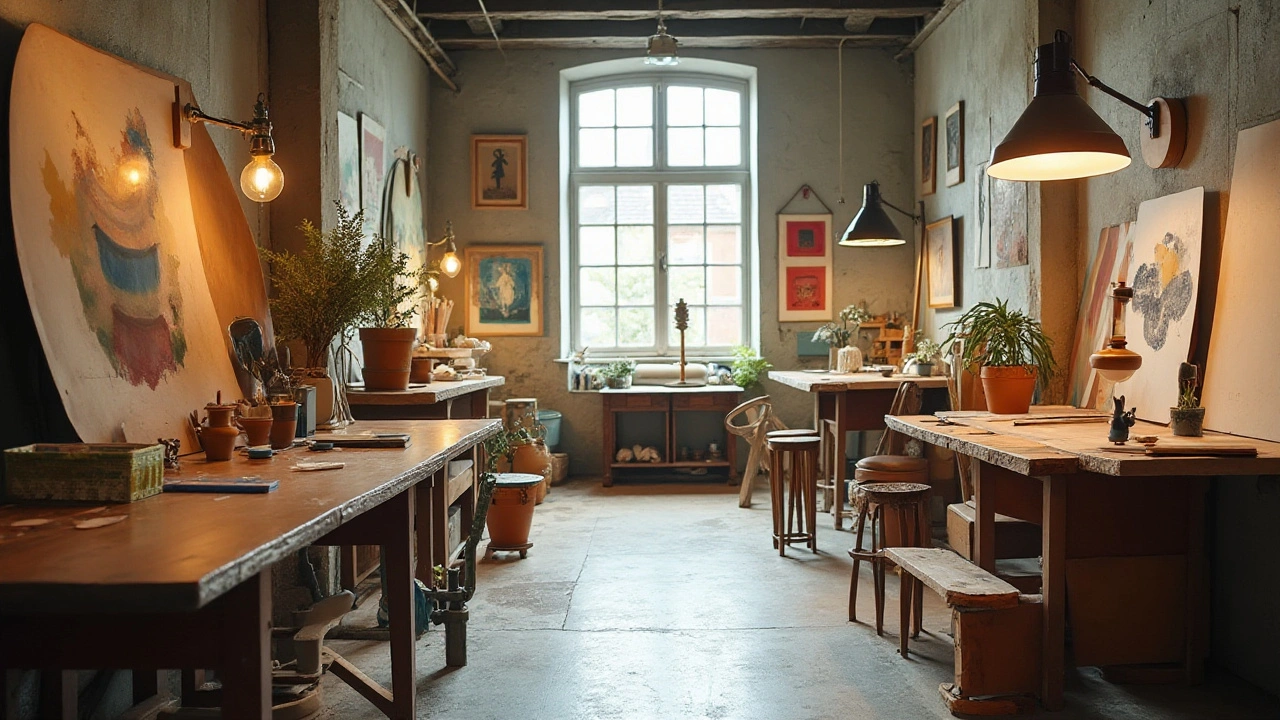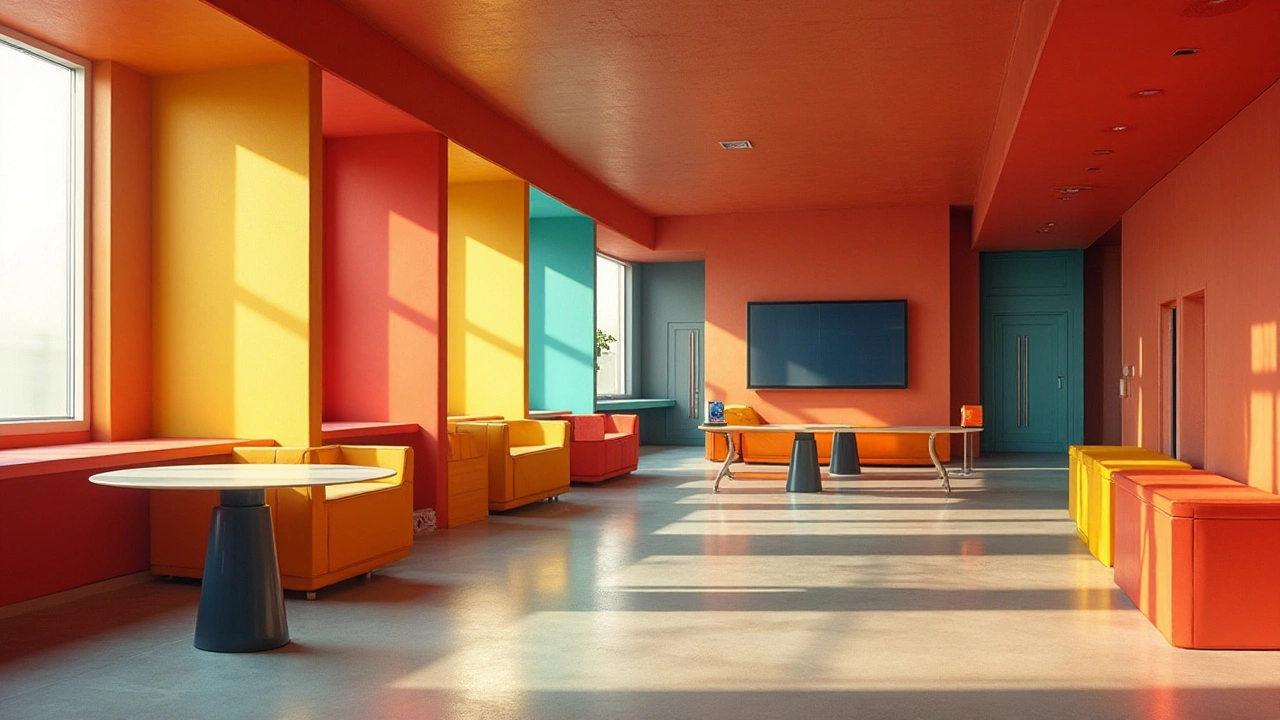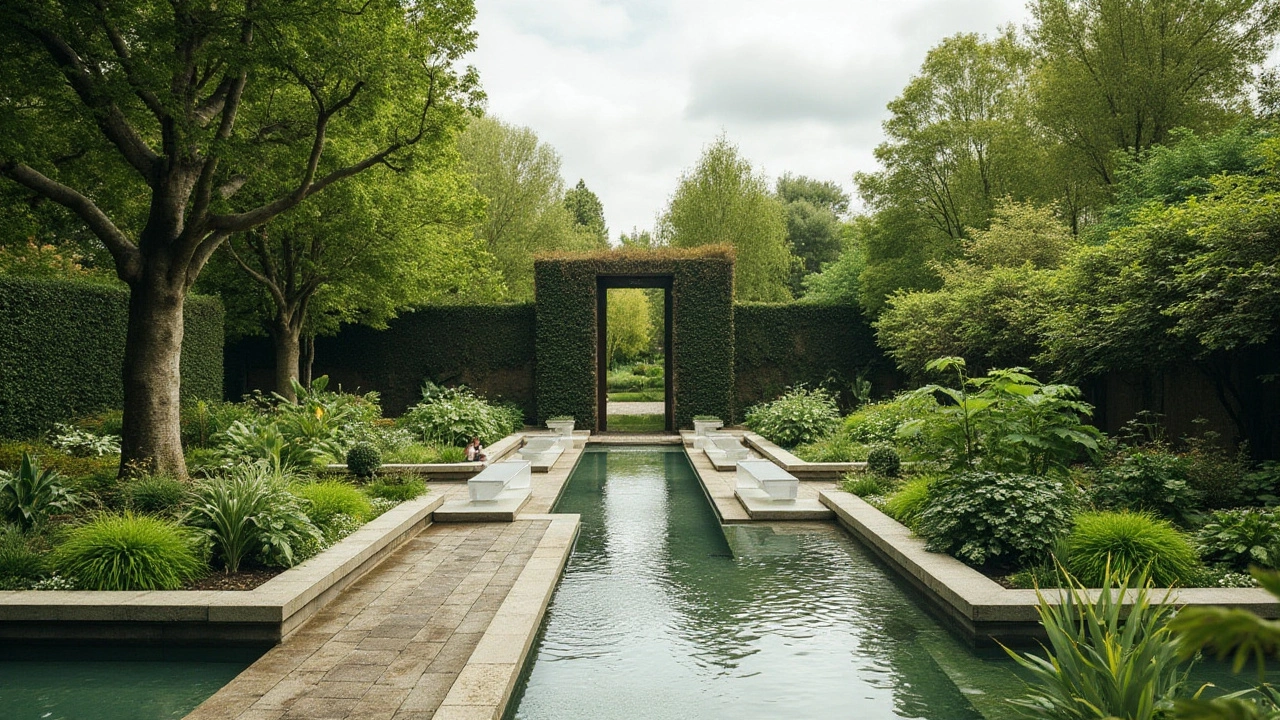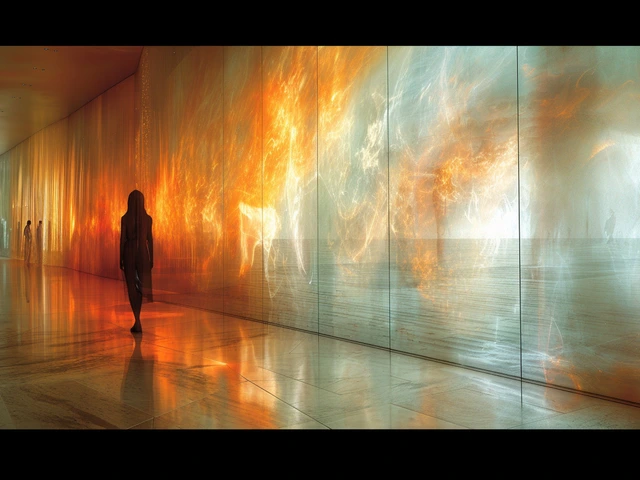When we talk about design that breaks boundaries, Bauhaus deserves a prominent mention. Founded in early 20th-century Germany, this school didn't just teach art; it built a bridge between creativity and practicality.
Concepts born from Bauhaus helped shape how we see modern design. Imagine sleek buildings, efficient furniture, and functional yet beautiful products – that’s Bauhaus for you. At its core, it was about simplicity and function, ensuring that beauty didn't mean compromising utility.
Today, decades after its inception, Bauhaus continues to touch every corner of the design world. From the clean lines of an urban skyscraper to the minimalist appeal of everyday objects, you'll find its spirit alive and thriving. Dive in to learn why Bauhaus matters and how it transformed our approach to design forever.
- Origins of the Bauhaus Movement
- Key Principles and Philosophies
- Influence on Modern Design
- Bauhaus Legacy in Today's World
Origins of the Bauhaus Movement
The Bauhaus movement originated in the aftermath of World War I, a time when Europe was grappling with profound economic and social challenges. It was founded by Walter Gropius in 1919 in Weimar, Germany. Gropius was an architect with a radical vision for the future of design, who believed that the separation between artists and craftsmen was superficial. At its inception, the Bauhaus aimed to unite all forms of art under one roof, advocating for a holistic approach to design that would blur the lines between artistry and industry. It was the first institution of its kind that sought to encapsulate the unity of art and technology, fostering an environment where creativity met functionality.
The school quickly grew in significance not only for its unique educational philosophy but also for the pivotal time in which it emerged. The Weimar Republic was a haven for freedom of speech and new ideas, offering fertile ground for the avant-garde sentiments that flourished at the Bauhaus. Yet, the path was not without obstacles. The school had to relocate twice due to political pressures, moving first to Dessau and eventually to Berlin. Each move influenced the curriculum and the works produced, yet the core vision remained steadfastly the same: to reconstruct the world through functionalism and simplicity.
While Gropius initially sought only to enhance production techniques by harmonizing art, technology, and craftsmanship, the vision rapidly expanded. Teachers and students alike explored ideas that would later underpin major design movements. The involvement from renowned figures in modern art, people like Paul Klee, Wassily Kandinsky, and Marianne Brandt, contributed significantly to the school's prestige and educational output.
"The ultimate aim of all creative activity is a building!" Gropius declared, encapsulating the essence of Bauhaus as an all-encompassing entity. This approach was not just theoretical; it had practical ramifications as the school nurtured a generation of designers and architects who would disseminate these revolutionary ideas globally.
One might see the Bauhaus as a response to the rapidly changing world, one defined by industrialization and shifting social norms. Its influence transcended borders, reaching the United States and influencing architectural designs like those of Chicago's skyline. The impact of Bauhaus is a testament to its foundational ideals—developing an

Key Principles and Philosophies
The Bauhaus movement, at its heart, was all about redefining the way we think about design. It wasn’t just an art school; it was a whole new way of seeing things. Their mantra combined art, craft, and technology to produce designs that were both functional and aesthetically pleasing. They wanted to make sure that every object was useful and beautiful at the same time. This approach challenged the traditional barriers between fine arts and applied arts, emphasizing that everything deserves the same attention to detail and artistry. The idea was that art shouldn't be separated from life; it should be integrated into our everyday experiences and spaces.
Walter Gropius, the visionary behind the Bauhaus, believed design should answer real human needs rather than just artistic whims. He encouraged his students to explore materials and collaborate across disciplines. This interdisciplinary method led to the iconic clean lines, geometric shapes, and minimal ornamentation that we now associate with modern design. The school championed the principle that design is not just what it looks like but how it works. By focusing on practicality and simplicity, Bauhaus laid the framework for our modern design understanding.
One might think the aesthetics of the Bauhaus come from simplicity alone, but it’s about more than that. It’s about boiling down to the essence. A chair wasn’t just a chair. It was a synthesis of form and function designed to enhance the user’s life. This functionality was central to Bauhaus’ philosophy. A beautiful object was one that served a purpose, stripped of unnecessary decorations, yet harmonious in its proportions and materials. This minimalist approach was a form of rebellion against the ornate designs of the past, bringing a sense of newness grounded in the real world.
The Cooperative Spirit
Bauhaus was big on the spirit of cooperation. Students, artisans, and architects worked hand in hand, merging their expertise to push the boundaries of design and creativity. They believed in learning by doing, which involved experimentation and hands-on practice. This system not only transformed design education but also made it accessible. A noted Bauhaus principle was that good design should be affordable and universally available. They weren’t just creating for the elite; they were designing for everyone. Their efforts aimed to democratize design, ensuring that high-quality, useful products were within reach for all.
The influence of Bauhaus didn't stop with its closure in Germany in the 1930s. Its teachings spread globally as its teachers and principles traveled the world, especially after many influential members moved to America. Today, the impact of Bauhaus can be seen everywhere, from modern architecture and industrial design to graphic arts. In essence, Bauhaus wasn't about just one school or movement; it was about creating a lasting legacy that has significantly shaped our world.
"The ultimate goal of all art is the building!" - Walter Gropius
Concepts established by Bauhaus resonate with today’s design philosophy. Designers continue to seek that balance between form and function, driven by the same ideals of newness and practicality that Bauhaus championed. The Bauhaus principles of simplicity, utility, and quality continue to inspire contemporary design across all fields. One could even argue that each new startup seeking to merge tech with everyday life has roots in the Bauhaus philosophy. This confluence of creative fervor and practical necessity is what made Bauhaus timeless and why its teachings remain relevant to this day.

Influence on Modern Design
The impact of the Bauhaus movement on modern design is immense and far-reaching. It fundamentally changed how artists and designers perceived aesthetics, merging artistic beauty with practical functionality. The Bauhaus inspired a new era where form follows function, a concept that resonates deeply in today's design principles. Its influence is evident in the clean, geometric shapes we see in modern architecture and the minimalism that defines contemporary interior design. The Bauhaus made design accessible and aimed to eliminate unnecessary ornamentation, focusing instead on the idea that good design should be available to everyone, not just the elite.
Many wonder how something established over a century ago could still be relevant today. The truth is that Bauhaus philosophy is embedded in everything from everyday household objects to complex architectural marvels. Companies around the world adopted its principles, leading to a movement that prioritized streamlining production without losing sight of aesthetics. What Bauhaus taught us is that aesthetics and practicality are not mutually exclusive. This belief is why we see its principles applied in various industries, from industrial design to IT product interfaces.
One could say Bauhaus's emphasis on simplicity sparked a paradigm shift. Instead of lavish, overly ornate designs, the focus shifted to straightforward, effective solutions. This idea is particularly prevalent in items we interact with daily, such as the sleekness of modern smartphone interfaces or the intuitiveness of contemporary software design. As Walter Gropius, the founder of the Bauhaus School, once put it,
"The ultimate goal of all artistic activity is building!"which underscores how integrated design elements have become within building works.
Statistics reveal that Bauhaus designs are timeless, with many of its furniture pieces still among the most popular choices in today's market. Their simplicity, durability, and beauty make them enduring favorites. A side-by-side comparison of a Bauhaus chair and a modern ergonomic one might surprise you with the similarities in their core design philosophies. Both exhibit the characteristic boldness and clarity, emphasizing functionality over decorative details.
This enduring legacy challenges every designer to consider not only how things look but also how they operate within a space and how users interact with them. As sustainability becomes a pressing issue, the Bauhaus's efficient use of resources continues to serve as a blueprint for architects and designers aiming to leave a smaller ecological footprint while maintaining an aesthetic appeal.

Bauhaus Legacy in Today's World
To say that the Bauhaus movement transformed the creative domain would be an understatement. Its influence has seamlessly woven itself into the very fabric of contemporary design, leaving a lasting imprint. This impact is evident in countless ways across diverse fields, reminding us that the movement's ideals continue to thrive in modern society. Just take a stroll through any major city and you'll see it in the towering silhouettes of skyscrapers or the structured simplicity of urban planning.
Bauhaus emphasized functional design, which serves real purposes rather than mere ornamentation. This principle has found a sweet spot in today’s minimalism trend. Think about the sleek designs of smartphones that fit perfectly in the palm of your hand, or the music players that carry thousands of songs but are barely visible in your pocket. These innovations are a testament to the continuing influence of Bauhaus design principles on industrial design. The movement's core belief that less can be more still resonates with today's creators and consumers alike.
The modern architectural landscape has also drawn heavily from Bauhaus ideals, embracing its sense of linearity and function. Ruthless architects echo this minimalist aesthetic, creating structures where functionality meets artistic ingenuity. Many contemporary architects pay homage to this by integrating open floor plans and simplistic surface treatments that speak to a clearer, more honest form of construction. An exemplary champion of this is the iconic Bauhaus-style villa that still stands in worldwide architecture. Walter Gropius, the father of Bauhaus, once said, "Architecture begins where engineering ends."
Bauhaus's impact goes well beyond tangible products. The educational principles pioneered by Bauhaus continue to influence art and design schools globally. The Bauhaus curriculum encouraged students to engage with virtual reality rather than rote learning and promoted teamwork over solitary innovation. Discerning graphic designers and artists can trace the DNA of their training back to Bauhaus's groundbreaking approach to teaching, which emphasized experimentation and collaboration.
One cannot deny the influence on the digital design realm as well. The movement's emphasis on simple yet effective communication meshes perfectly with the internet age, where clear user interfaces and easy navigation are essential. Websites and apps strive for well-crafted designs that serve information with clarity. Indeed, the clean and straightforward design conveyed through websites today bears the stamp of Bauhaus's legacy of functional beauty.
But it’s not just in the tangible or digital mediums where Bauhaus has left its mark. Its influence extends into the broader philosophical realm, provoking us to question the nature of beauty and utility. Are they opposed, or can they coexist harmoniously, leading us to a better, more thoughtful way of creating? Today, several Bauhaus exhibitions worldwide aim to showcase how this historical art school continues to provoke thought and inspire innovation today. It's as if the essence of Bauhaus lives on, challenging us to rethink our routines and imagine a world where form truly meets function.




